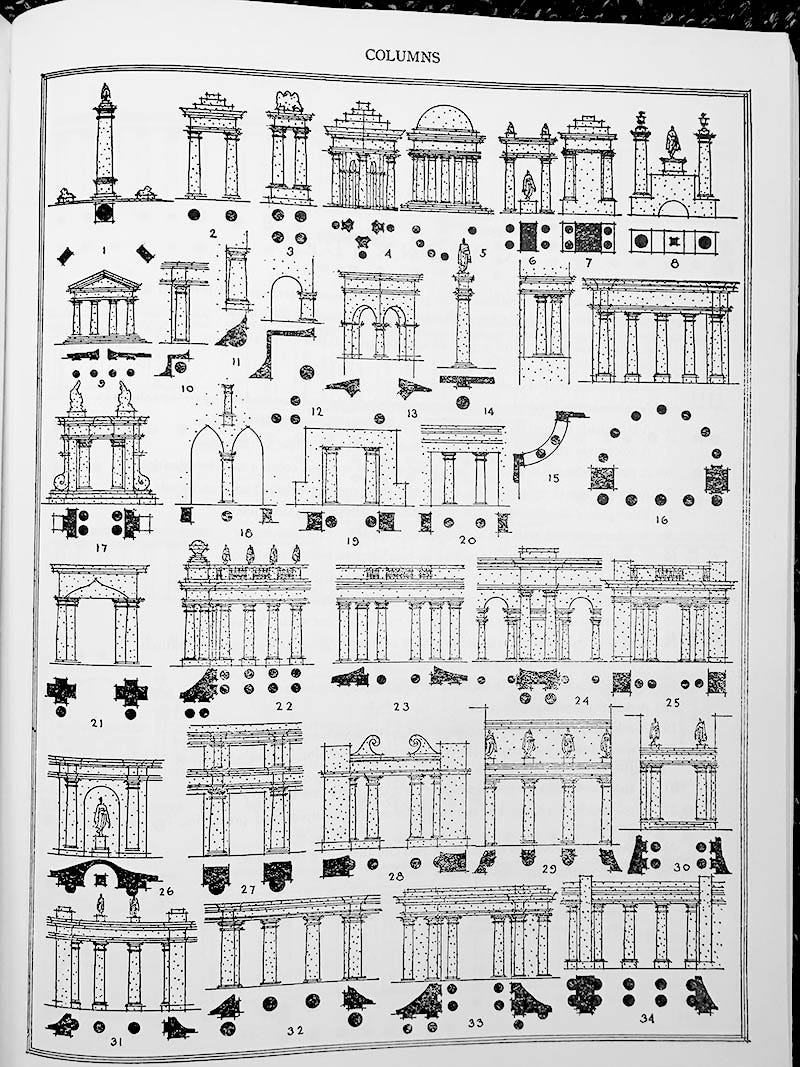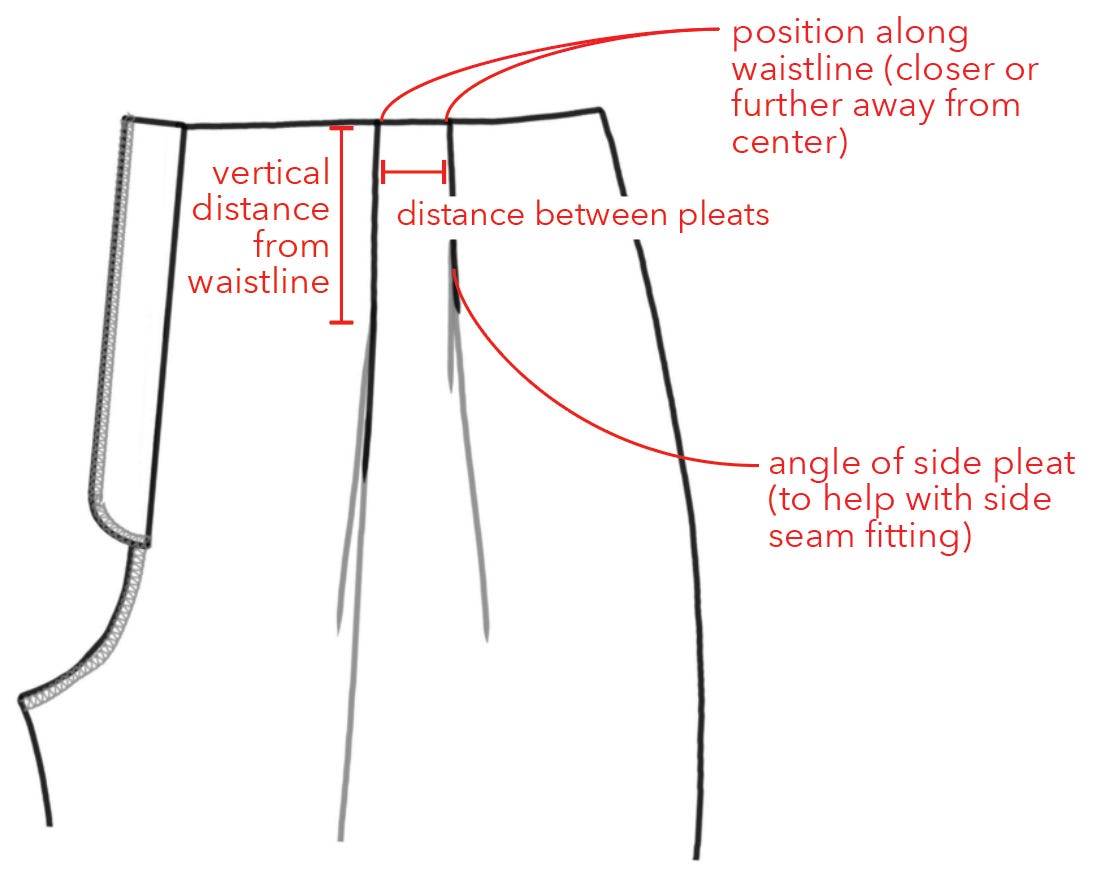Assembling the elements
A sewing pattern is the garment equivalent of a flat architectural blueprint for buildings.
This image is from a pictorial encyclopedia showing a variety of columns. The columns are architectural elements—building components.

The style and scale of the building will dictate the dimensions of each column, its height and girth.
If the front of the building has equally spaced columns then the number of columns will be determined by the building width at front. If the building is surrounded by columns we would need to know the distance of the front, sides and back of the building to figure out the number of columns.
In terms of design and structure, these architectural elements are somewhat discrete. Mix and match. Every building needs a foundation and a roof. But one type of foundation could be used for a variety of roof styles and so forth.
Dissecting the pattern draft
A previous post, dissected a pattern into component parts (crotch seams, side seams, etc). The pattern elements collectively create the shape and style of a garment. In the course of the #MPWM, we have ben discussing how the pattern elements relate to each other, the overall design and the individual body.
One way we have been thinking about these elements is in terms of grading for different sizes, such as the vertical distance traveled by a seam, width of the hem. Roughly speaking, these are the “horizontals and the verticals”.
As we are reviewing some of the participants customized pattern alterations in the zoom, one of the themes emerging (I hope) is how a customized fit emerges not just from figuring out the “horizontals and verticals”, but how the pattern elements are situated relative to each other on the landscape of the body.
Pleats and Darts
The multi-sized pattern lets us know how each of the elements varies according to body sizes. One element that did not change with the body size pattern grade were the pleats and darts. Regardless of body shape and size, we all began with identical pleats and darts.

Fitting pleats and darts
From the same starting point, how have we been cutomizing the darts and pleats?
This diagram summarizes the fitting for darts and pleats:
We kept all the architectural elements to maintain the design of the pant while positioning them on the landscape of the body. Every maker decided on the relative position of the darts and pleats along the waistline. With the occasional exception of the side dart/pleat, our custom fitting maintained how the darts and pleats manipulate the fabric to create the style exactly as specified by the architectural blueprint.





